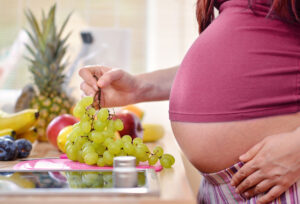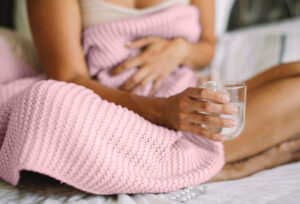
10 Nutrition Tips for Pregnant Women
During your pregnancy, you’re eating for two. That means you need to eat more, and you need to eat better. As a result, your diet
Getting pregnant is much harder than you think. Nature’s fertility rate is only 20% per month for healthy women in their thirties, meaning every hundred women who are actively trying to get pregnant, eighty of them will have to try again. Infertility is not becoming pregnant after a year of frequent, unprotected intercourse (Mayo Clinic).
Statistically, 6% of women 15-44 years old have difficulty becoming pregnant while 12% having trouble carrying a pregnancy to term. In 10% of infertility cases, the cause is never found (CDC). If you’re trying to get pregnant, speak with your doctor about a fertility plan.
Problems with blocked or damaged fallopian tubes account for 35% of female infertility issues. Salpingitis, or inflamed fallopian tubes, are often caused by sexually transmitted disease, pelvic infection, or endometriosis. Endometriosis is a condition named for endometrial tissue growing outside of the uterus that can damage the fallopian tubes. Doctors can test if the fallopian tubes are unobstructed with a hysterosalpingogram, an X-ray of the uterus and fallopian tubes. During a hysterosalpingogram, a dye is injected through the cervix then photographed to track its path through the body (CDC).
When a woman isn’t ovulating, we call it anovulation. There are several causes for anovulation such as irregular periods. Any abnormalities in your cycle should be logged in Oohvie and reported to your doctor. The most common cause of female infertility due to ovarian issues is polycystic ovary syndrome (PCOS). It’s a condition of elevated testosterone leading to irregular ovulation, excess hair growth, and acne (CDC).
Many ovulation issues link to diminished ovarian reserve (DOR), a condition when fewer eggs limit reproductive potential. All women experience DOR as they approach menopause, but some are affected earlier in life or may trigger DOR from ovarian surgeries, smoking, and aggressive medical treatments like radiation (CDC).
Age, weight, and sexual health history all play a large role in fertility. So do your personal habits. If you’re trying to get pregnant, quitting smoking can improve your chances. Smoking can damage the cervix, fallopian tubes, can prematurely deplete your number of eggs, and put you at high risk of miscarriage and ectopic pregnancy. Limiting alcohol and caffeine intake is proven to help with fertility (Mayo Clinic). If you consume more than one alcoholic or caffeine beverage in a day, considering stopping before trying fertility treatments and speak to your doctor about how your personal habits might impact your fertility. Using Oohvie to accurately treat your menstrual cycles and symptoms can help your doctor identify the causes of infertility and offer effective treatments for you to achieve pregnancy.
References
“Infertility.” Centers for Disease Control and Prevention, Centers for Disease Control and Prevention, 16 Jan. 2019, www.cdc.gov/reproductivehealth/infertility/.
“Infertility.” Mayo Clinic, Mayo Foundation for Medical Education and Research, 25 July 2019, www.mayoclinic.org/diseases-conditions/infertility/symptoms-causes/syc-20354317.

During your pregnancy, you’re eating for two. That means you need to eat more, and you need to eat better. As a result, your diet

Periods. The word alone can cause anxiety. If you have PMS, the anxiety can be multiplied by 10. The only thing worse than your period
One of the most natural occurrences for women is their period. For many women, however, it can be hard to know what’s going on with
Copyright © Oohvie 2024 . All rights reserved. | Privacy Policy | Terms & Conditions


